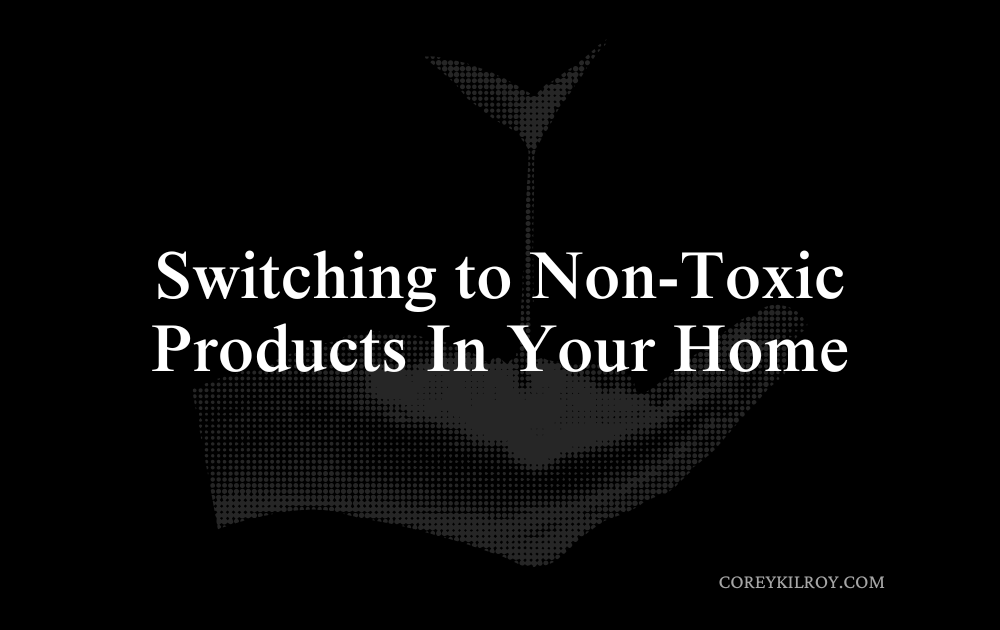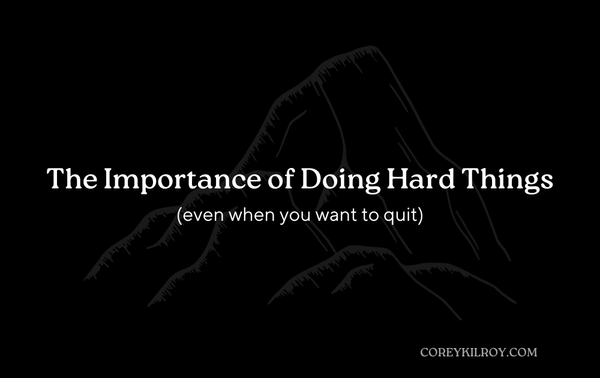Introduction to Switching To Non-Toxic Products In Your Home

THE WARM UP
The air we breathe and the products we use daily in our homes have a more significant impact on our health than we may realize.
Hell, I even wrote an essay about breathing in nanoparticles from our stoves while cooking…
Nonetheless, there’s no denying that toxins from common household items can disrupt our hormones, cause respiratory issues, and even increase long-term health risks.
However, making the shift to non-toxic alternatives can play a big role in reducing exposure to these harmful chemicals, leading to a cleaner, healthier environment for us and our family.
THE WORKOUT
Here are some easy swaps to begin creating a non-toxic home:
- Cleaning Products: Most conventional cleaners contain harsh chemicals that can irritate your skin, eyes, and lungs. Swap these out for natural options like vinegar, baking soda, or store-bought non-toxic brands like Seventh Generation, Dr. Bronner’s or Branch Basics.
- Fragrance-Free Solutions: Synthetic fragrances in candles, air fresheners, and personal care products often contain phthalates, which can disrupt your hormones. Opt for fragrance-free or products made with essential oils. A beeswax or soy candle is a much safer choice than paraffin-based candles.
- Non-Toxic Cookware: Non-stick pans, often made with Teflon, can release harmful fumes when overheated, or scrape off into your food. Transition to safer alternatives like cast iron, stainless steel, or ceramic cookware, which don’t leach chemicals into your food.
- Personal Care Products: Shampoos, lotions, and makeup can be loaded with harmful parabens and sulfates. Brands like Attitude and Dr. Bronner’s offer non-toxic alternatives that are gentle on your skin and free of harmful chemicals.
- Water Filters: Tap water can contain pollutants like chlorine, lead, and pesticides. Investing in a good water filtration system can significantly reduce your exposure to these contaminants. A great example would be the Big Berkey Gravity-Fed Stainless Steel Countertop Water Filter System.
- Non-Toxic Linen: Traditional furniture and Linen can off-gas volatile organic compounds (VOCs) from flame retardants and adhesives. Consider switching to linen made from natural, organic materials like cotton or wool.
ANALYSIS
When I started making these swaps, one of the biggest and simplest changes I made was replacing my old non-stick pans with stainless steel cookware.
I had been using a non-stick pan for years until I noticed something alarming... the Teflon was visibly flaking off into my food.
That moment was enough for me to make the switch, and it’s been a game changer ever since.
Cooking with stainless steel takes some getting used to, but now my meals feel cleaner, and I’m no longer worrying about harmful chemicals leaching into my food.
If you’re curious about this transition, I’ve written an in-depth article about Why You Should Ditch the Non-Stick-Pans here.
THE COOL DOWN
Creating a non-toxic home doesn't need to happen overnight.
Start small by swapping out one item at a time, like your cleaning supplies or cookware.
It’s a gradual shift that will make your home healthier and more sustainable.
Your future self will thank you.
Be well and Keep Pluggin.
-C.



